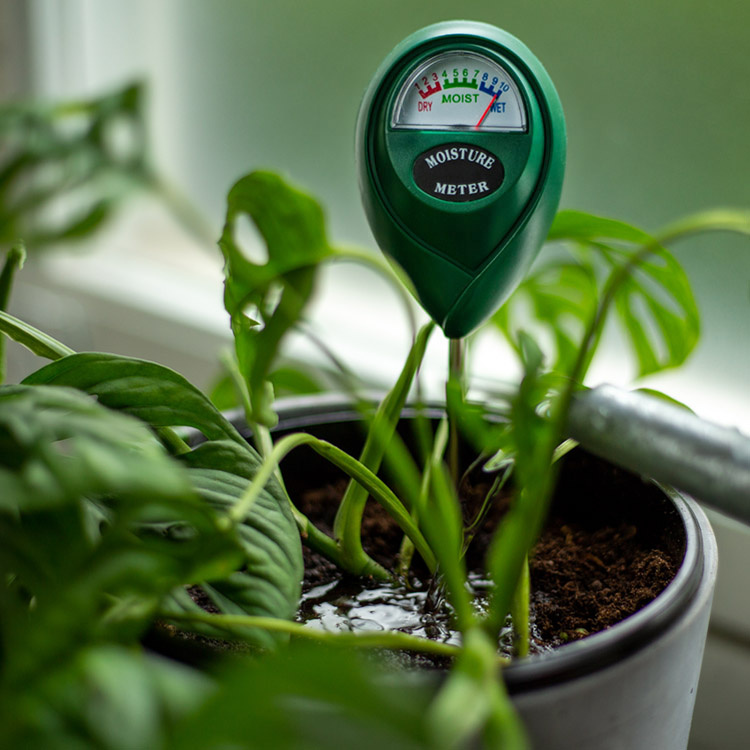Moisture Meter Reviews: Contrasting the very best Models for Expert and DIY Usage
Moisture Meter Reviews: Contrasting the very best Models for Expert and DIY Usage
Blog Article
Delve Into the Globe of Moisture Meters: Whatever You Need to Know
In the world of moisture meters exists a world of precision and practicality that frequently goes unnoticed. These devices, while apparently uncomplicated, hold a wide range of info that can substantially affect different markets and applications. Understanding how moisture meters operate, the various types available, and their diverse uses can drop light on their importance in ensuring top quality and efficiency. By discovering the intricacies of wetness meters, one can uncover a beneficial device that goes beyond simple measurement, offering understandings that can make a significant difference in numerous areas.
How Moisture Meters Work
Moisture meters operate by determining the electrical conductivity or capacitance of products to figure out the wetness content existing. These meters are important tools throughout various sectors, consisting of woodworking, agriculture, and building and construction. By using various approaches such as pinless or pin-type innovation, wetness meters give accurate analyses that help specialists make informed choices.
Pin-type dampness meters function by inserting the sharp pins into the material being evaluated. The electrical conductivity between the pins is after that gauged, with greater moisture degrees causing boosted conductivity. Moisture Meter. On the other hand, pinless wetness meters utilize electro-magnetic signals to check a larger area without causing any damages to the material's surface area. These meters are ideal for swiftly analyzing dampness levels in large areas or completed products.
Regardless of the approach used, dampness meters play an important duty in preventing issues such as mold growth, architectural damages, or product flaws caused by excess dampness. Understanding just how these meters job is necessary for guaranteeing the high quality and integrity of products in various applications.
Kinds of Moisture Meters
Offered the vital duty wetness meters play in different markets, it is crucial to comprehend the various kinds available to professionals for accurately evaluating moisture levels - Moisture Meter. There are mostly two primary sorts of dampness meters: pinless and pin-type moisture meters

On the various other hand, pinless moisture meters make use of electro-magnetic sensing unit plates to scan a bigger location of the product without creating any kind of damages. This kind is appropriate for quickly scanning huge areas and is typically made use of for flooring, walls, and ceilings. Pinless meters are convenient for taking analyses on completed surface areas without leaving any kind of visible marks.
Both types of dampness meters have their advantages and are picked based on the certain needs of the task handy. Understanding the differences in between these kinds is vital for professionals to make accurate moisture analyses.
Applications Across Industries
Construction professionals depend on moisture meters to analyze the dampness levels in building products like timber, drywall, and concrete, which is crucial for preserving architectural honesty and protecting against problems like rot or mold. The floor covering market uses dampness meters to determine he has a good point the dampness material in subfloors prior to installing numerous flooring treatments, avoiding expensive damages due to excess wetness. In the food market, wetness meters are made use of to keep track of and regulate moisture levels in products such as grains, nuts, and dried fruits to keep quality and high quality.
Tips for Utilizing Dampness Meters
Utilize the dampness meter's calibration settings to guarantee precise analyses when gauging the wetness web content in different materials. Calibration is crucial for the correct performance of a wetness meter. Before each usage, it is advisable to check and change the calibration setups according to the particular material being tested. Additionally, ensure the meter is established to the appropriate moisture array for the material you are gauging to obtain one of the most accurate outcomes.
When making use of a pin-type wetness meter, insert the pins to the proper depth suggested for the material being evaluated. This makes certain that the moisture analyses are extracted from the right deepness within the material, offering an extra accurate representation of its wetness web content. For pinless dampness meters, remember to maintain proper contact This Site with the product's surface area to obtain dependable analyses.
On a regular basis examine and replace the batteries in your dampness meter to stop incorrect analyses due to low power. When not in use to lengthen its life-span and preserve its precision, Store the meter in a secure and dry area. By complying with these tips, you can optimize the efficiency of your dampness meter and get accurate wetness material dimensions throughout various materials.
Upkeep and Calibration
To ensure the precision of dampness content measurements, regular upkeep and calibration of the dampness meter are necessary steps in its proper performance. Calibration readjusts the dampness meter to ensure that it provides consistent and trusted results.
Calibration should be carried out regularly, especially if the moisture meter is made use of regularly or in crucial applications where exact measurements are called for. Several wetness meters feature calibration tools or can be adjusted by professional solutions. Moisture Meter. It is advised to keep a log of calibration days and results to track the efficiency of the moisture meter over time. By maintaining and calibrating the wetness meter consistently, individuals can trust the accuracy of the wetness web content dimensions obtained.
Verdict

To conclude, wetness meters play an essential duty in numerous industries by precisely determining the dampness content of materials. Understanding exactly how these devices function, the different kinds offered, and correct maintenance and calibration are crucial for obtaining reliable outcomes. Whether in production, construction, or agriculture, the use of wetness meters aids ensure top quality control and performance in procedures.

In final thought, wetness meters play a critical function in different markets by precisely determining the wetness content of materials.
Report this page